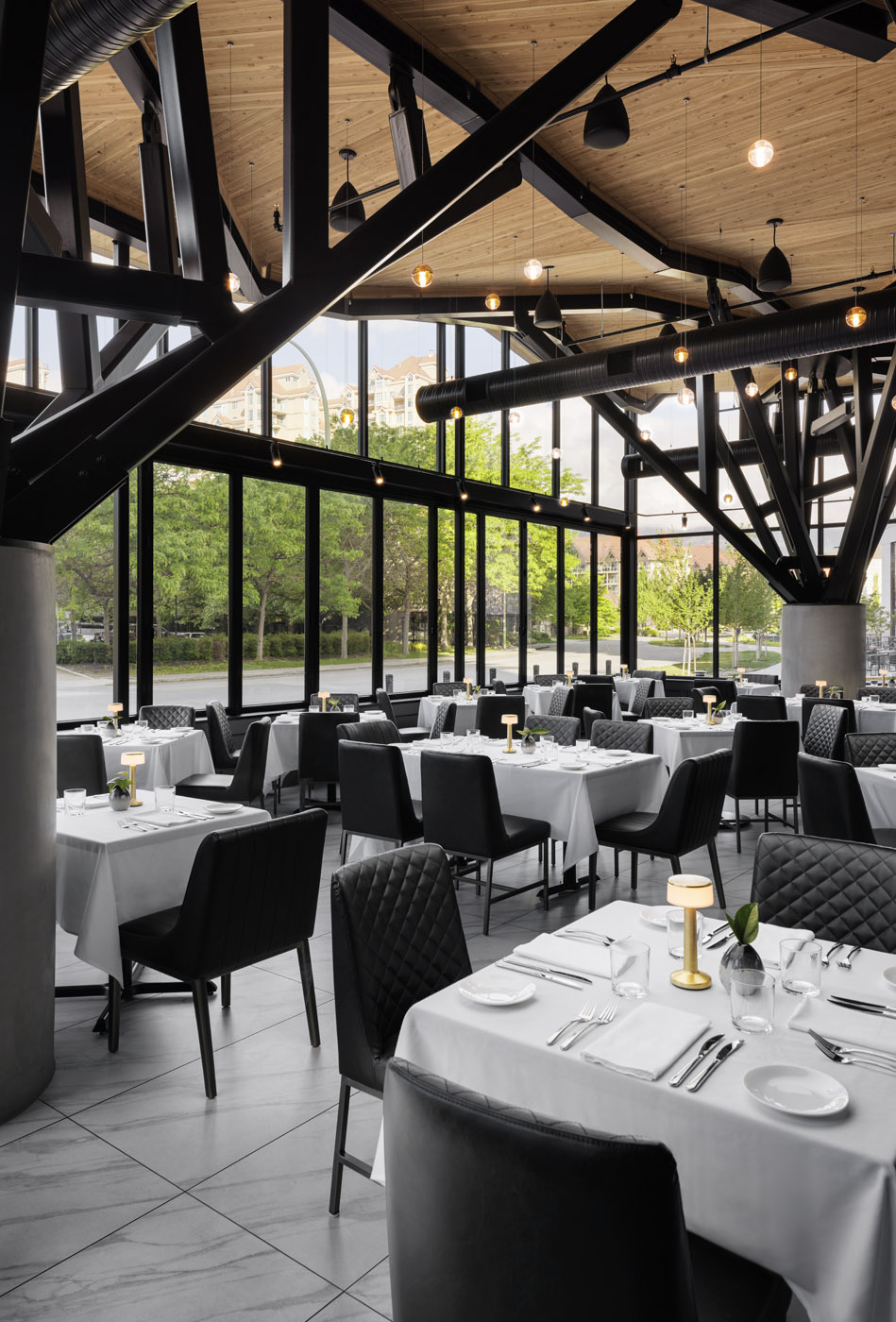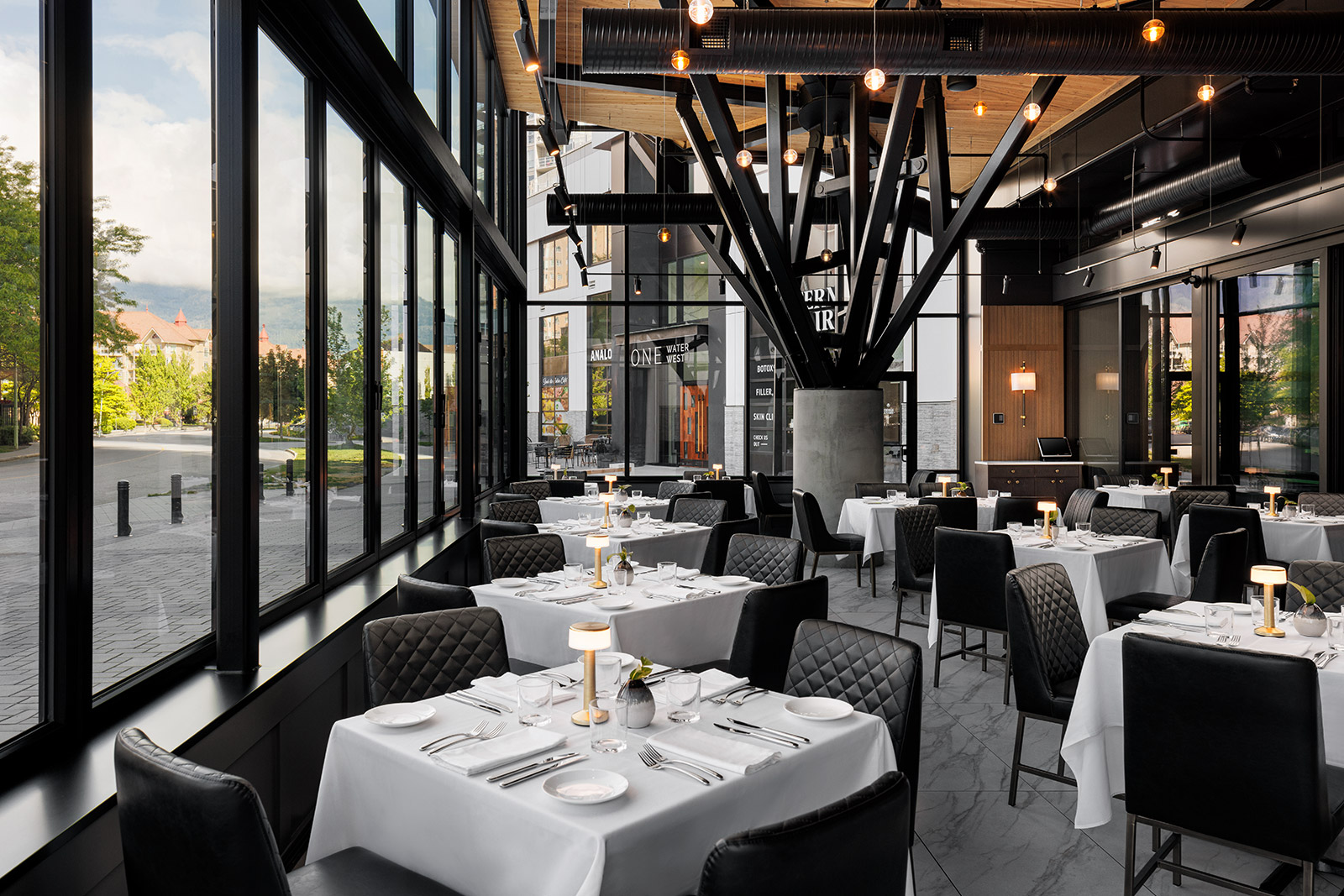There’s something surreal about luxury hospitality and architectural photography.
The way the light falls through the window, how the colour and texture of each surface are perfectly represented and how each lamp in the room emits a soft and inviting glow—it’s a feeling that has captivated me for the past 25 years as a commercial photographer, and it’s one that I love sharing with my clients around the world.
But how do I capture euphoric images and what role does editing play in architectural photography? Let’s look behind the scenes at how I turn a compelling composition into an image that captures the heart and soul of your restaurant, resort or property.
1. Shoot for the edit
It all starts with a great frame.
After ironing out the shot list with you and your team, my assistant and I arrive on site ready to capture only the photographs you need. This narrow focus empowers us to spend more time on each image.
Once you have approved the composition and the camera is locked down on a tripod, we spend the next hour arranging furniture, steaming drapes and ensuring every inch of the frame is picture-perfect.
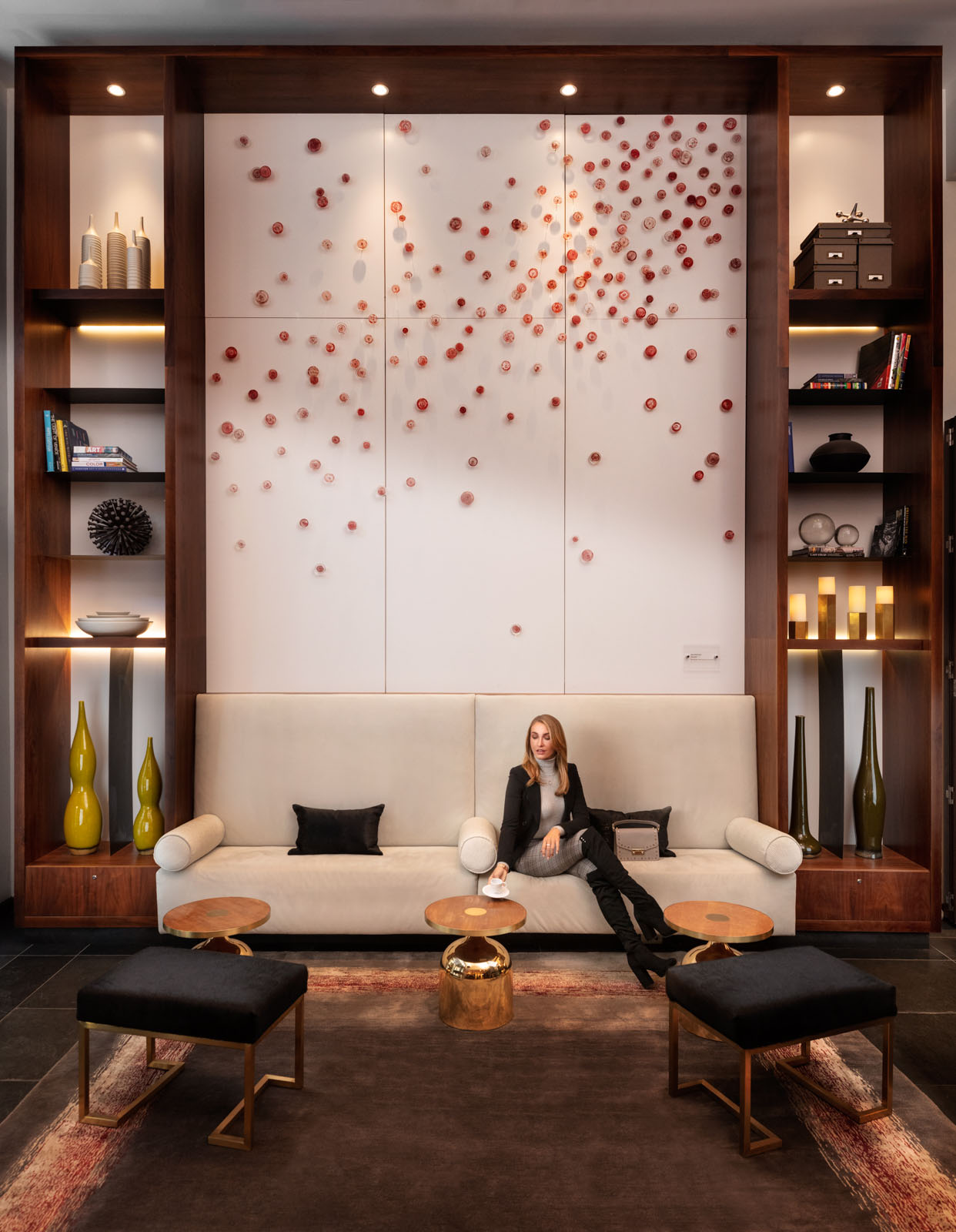
Can I look at the images during the photoshoot?
When you invest in professional hospitality and architectural photography, you want to be a part of the creative process. Beyond providing creative feedback and approving compositions, we can also set you up with a wirelessly tethered iPad to watch as we capture your luxury property in real time. Just remember that you’re seeing a raw and unprocessed image.
At this stage, we’re focused on lighting individual components. In one shot, we might expose for the blue sky visible through the windows, and in another, we’ll make sure each table in your restaurant is captured in the right light.
Equipped with our jumbled mosaic of images, it’s time to enter the editing suite.
2. In the editing suite
This is where the real magic happens. Or, as my assistant says, “Where we put the puzzle pieces together.”
For every hour I spend behind the camera photographing residential interiors and exteriors, I spend one to two hours in front of the computer. For a luxury hotel or resort, I spend upwards of four hours editing each image.
In hospitality and architectural photography, everything needs to be perfect. Here’s what I do behind the scenes:
- Blend anywhere from five to 50 images together into one frame to capture the best part of each photograph
- Manually adjust the exposure to make sure the lighting is just right
- Colour-correct the image to fit your brand and style
- Smooth out walls, tablecloths and bedsheets
- Add my secret sauce to make your images pop
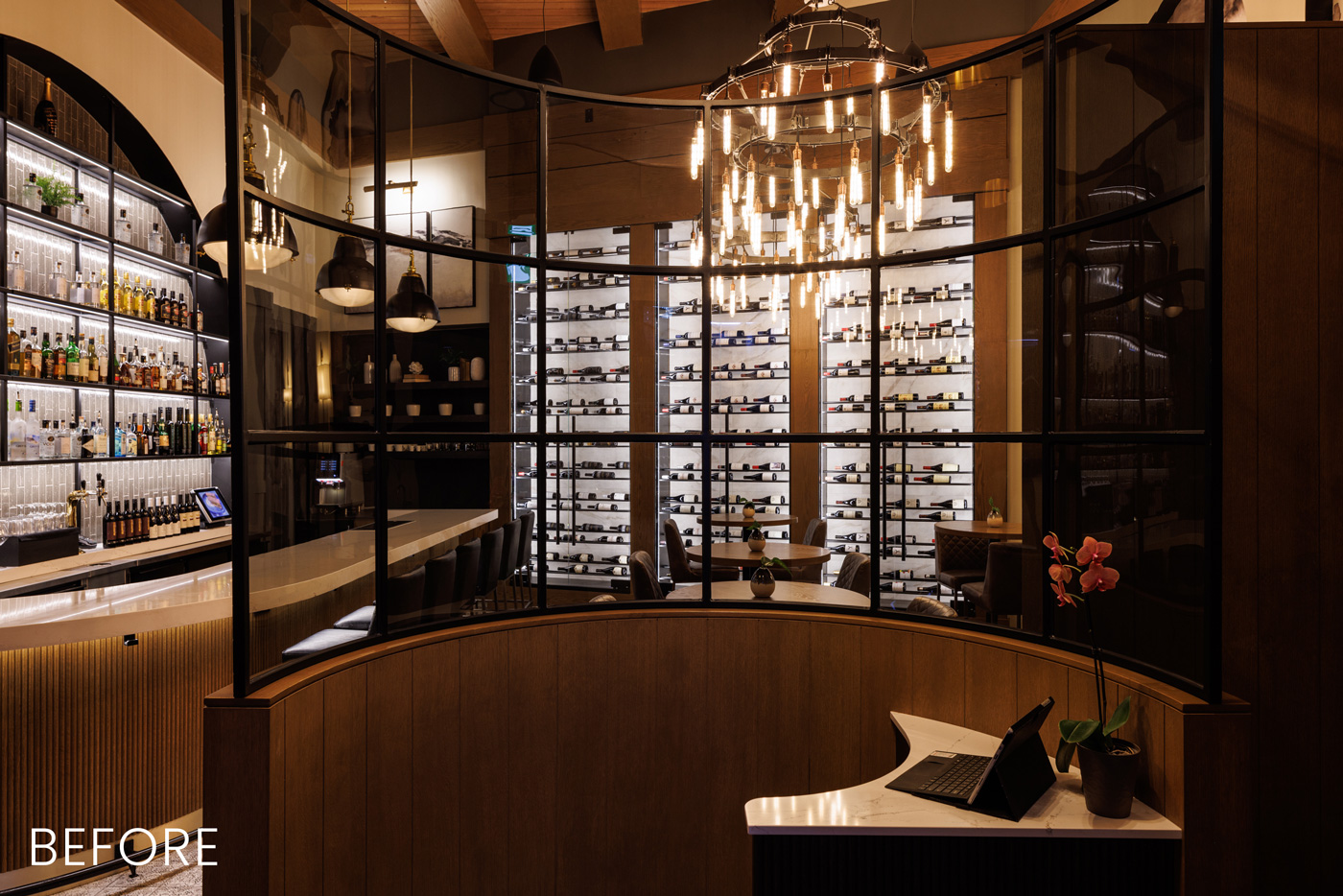
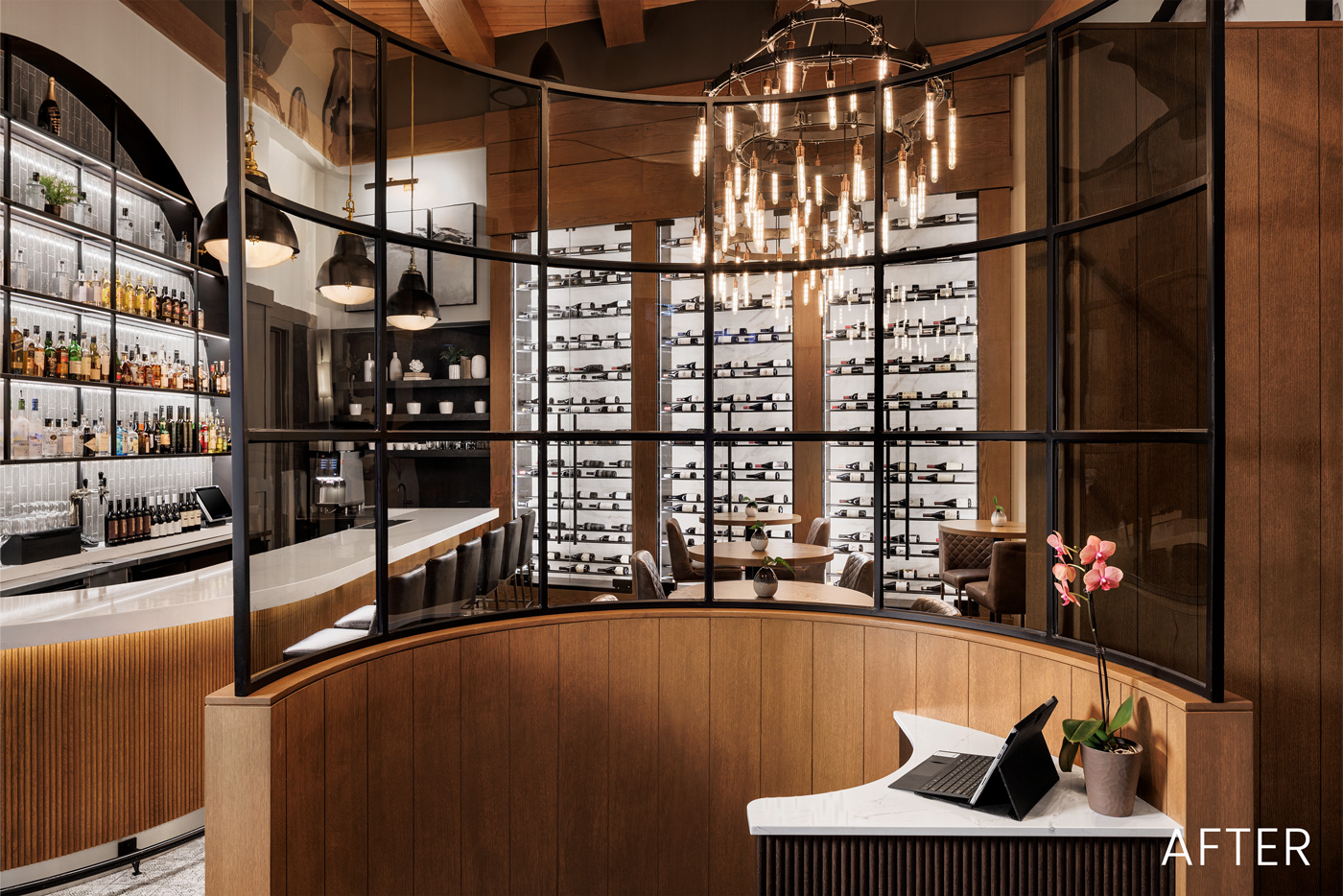
How has AI changed luxury photography editing?
From Adobe Photoshop’s generative fill to artificial intelligence image generators, AI has had a profound impact on commercial photography. However, AI is not a replacement for professional photographers. It requires human input and oversight to ensure the product is a faithful representation of your business.
With AI editing tools, the time spent editing each image is drastically reduced. This empowers me to spend more time fine-tuning each photograph to create something that you’ll be proud to share with your audience.
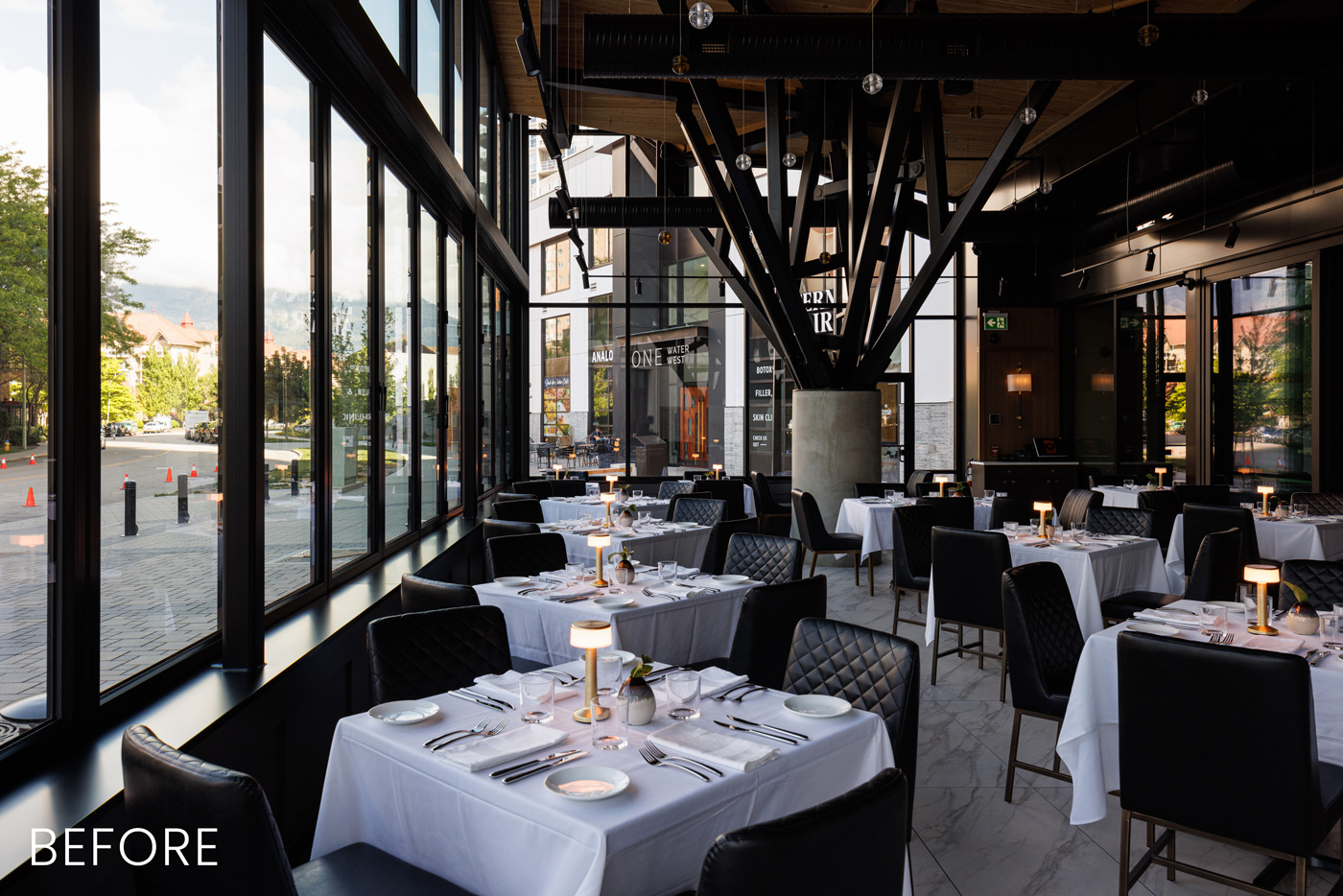
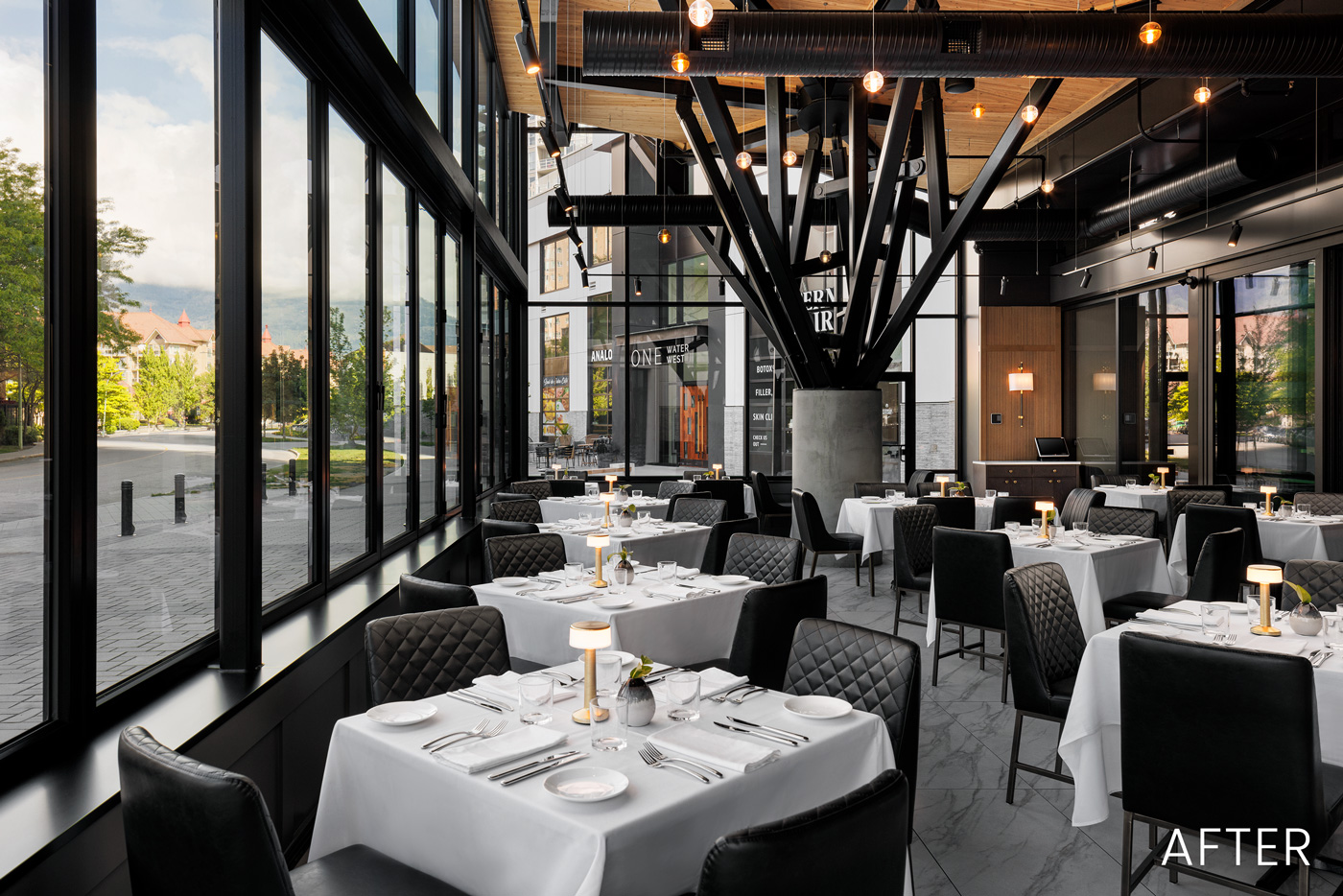
3. The final product
As a luxury hospitality and architectural photographer based in Kelowna, I believe there’s nothing better than the big reveal. After hours of rearranging furniture and several days at the editing desk, your excitement over the final image makes the process all worthwhile.
Want to learn more about the magic of retouching hospitality and architectural photography or have questions about your next photoshoot? Reach out to me online to get started.
